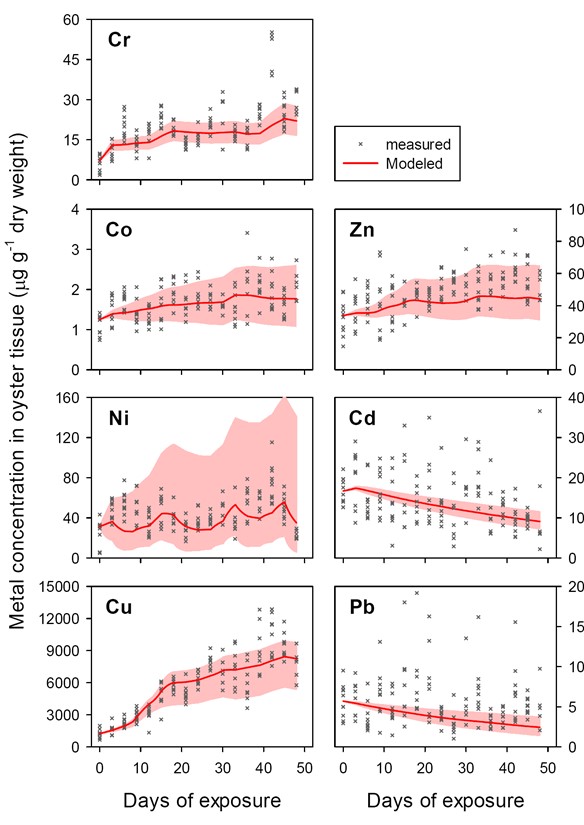作者:Tan, QG; Zhou, WT; Wang, WX
影响因子:6.65
刊物名称:ENVIRONMENTAL SCIENCE & TECHNOLOGY
出版年份:2018
卷:52(2) 页码:484-492.
Metal contamination is a major problem in many estuaries. Toxicokinetic models are useful tools for predicting metal accumulation in estuarine organisms and managing the associated ecological risks. However, obtaining toxicokinetic parameter values with sufficient predictive power is challenging for dynamic estuarine waters. In this study, we determined the toxicokinetics of multiple metals in the oyster Crassostrea hongkongensis in a dynamic estuary polluted by metals using a 48 day transplant experiment. During the experiment, metal concentrations in oysters, water, and suspended particles were intensively monitored at 3 day intervals. The toxicokinetic parameters were then estimated using the Markov chain Monte Carlo (MCMC) method. The calibrated model was capable of successfully simulating the time-course of metal bioaccumulation in oysters and was further validated by predicting the bioaccumulation at another site in the estuary. Furthermore, the model was used to assess the relative importance of different pathways in metal bioaccumulation. With the MCMC method, distributions instead of single values were assigned to model parameters. This method makes the model predictions probabilistic with clearly defined uncertainties, and they are thus particularly useful for the risk assessment of metals in aquatic systems.

Figure 3. Metal bioaccumulation in soft tissues of oysters at site 1 during the 48 day transplantation. The × symbols represent measured concentrations; the red curves and the shaded areas are average concentrations and 95% confidence intervals predicted by the model based on the parameter samples from the MCMC fittings, respectively. See Figures S7-S13 for the parameter samples.

